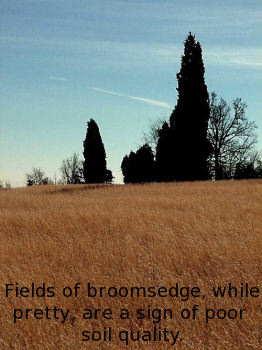
Assess your new homestead
 When
we finally moved onto the farm, I had spent years dreaming and planning
about what I wanted our eventual homestead to look like. I was so
excited to be realizing my dream that I started planting things
willy-nilly, with the result that a lot of my early effort went for
naught. I wish I'd had the foresight to spend a few days
assessing my property before beginning on any of the projects.
When
we finally moved onto the farm, I had spent years dreaming and planning
about what I wanted our eventual homestead to look like. I was so
excited to be realizing my dream that I started planting things
willy-nilly, with the result that a lot of my early effort went for
naught. I wish I'd had the foresight to spend a few days
assessing my property before beginning on any of the projects.
If I could go back in
time, my first step would be to make a map of the
farm. Since most of my property is wooded, I'd just focus on the
areas we plan to to farm for now. Within that area, I'd map
existing structures, water sources (well and creeks), power and
telephone lines, septic systems and/or sewer lines, and
driveways. I'd also keep my eye out for existing cultivated
fields, orchards, or pastures. Fences are very useful --- put
those on the map.
Next, I'd start thinking
about the land as a farm. Which areas
are flat or have little slope? Which areas have good soil or poor
soil? It's very much worth it to send off some soil samples to
the extension service to find out if your soil needs help in certain
areas. But you can also learn a lot by just looking at what's
currently growing in an area --- blackberry brambles are a good sign
because they mean your soil is relatively rich, while broomsedge is
sign of worn out soil. You should use high quality soil for your
garden and orchard, if possible.
| This post is part of our Starting Out on the Homestead lunchtime
series.
Read all of the entries: |
Want more in-depth information? Browse through our books.
Or explore more posts by date or by subject.
About us: Anna Hess and Mark Hamilton spent over a decade living self-sufficiently in the mountains of Virginia before moving north to start over from scratch in the foothills of Ohio. They've experimented with permaculture, no-till gardening, trailersteading, home-based microbusinesses and much more, writing about their adventures in both blogs and books.
Want to be notified when new comments are posted on this page? Click on the RSS button after you add a comment to subscribe to the comment feed, or simply check the box beside "email replies to me" while writing your comment.
